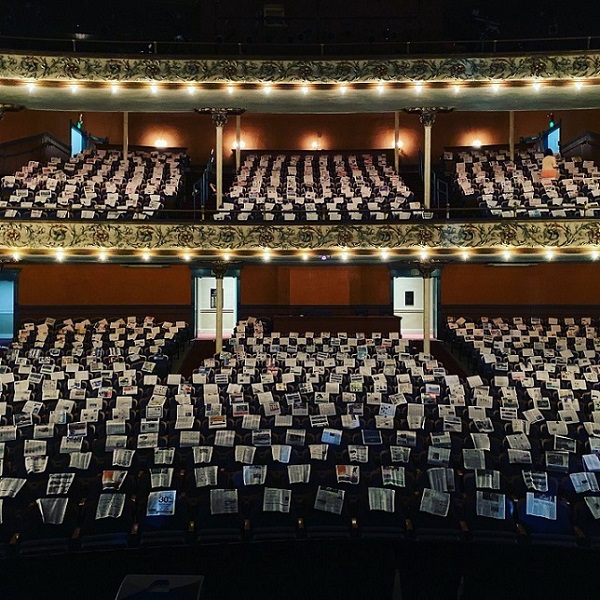Today was the big day for our community’s On The Table discussion. If you aren’t familiar with the nationwide program, it is a day different groups in a community host discussions on any topic they feel needs to be addressed–including just leaving things open for whatever comes up. In our community, there were hundreds of tables hosting thousands of people doing everything from having breakfast with the mayor to discussing urban revitalization, homelessness, law enforcement, entrepreneurship, preserving oral history–you name it.
I hosted two separate sessions about Arts Midwest’s Creating Connection initiative. I will probably reflect on that in a future post. Perhaps the most valuable bit of insight for arts and cultural organizations didn’t emerge from a conversation in my venue, nor do I believe the slated topic of conversation was about the arts.
My marketing director was having a conversation with a woman who is an artist and currently works for a foundation which funds arts initiatives. This woman admitted that she regularly attends performances at a local theater and always see the big sign encouraging her to subscribe. However, she has never subscribed because she perceives that as something old people do. She also admitted she kicks herself later for paying full price when she could be getting a good discount by subscribing.
While this is only a single anecdotal case — notice that she would rather pay full price in order to avoid being associated with her perception of a subscriber. Perception was a much greater motivator than price. That is something to think about when price is cited as the primary impediment to participation.
When she was attending a discussion at my On The Table event, this same woman talked about her previous job working for an organization that had a gallery of work by local artists. Before she started working there, she had never entered the gallery due to concerns about whether she would be allowed to enter and if she was dressed properly.
Looking at the same gallery through the windows from the street, I would describe it as having a welcoming homey quality, but that isn’t what she saw.
Her candid conversations just reinforced for me the research findings that point to just how strong an influence one’s sense of belonging has in whether people participate in an experience or not. It is the invitation to participate, how the invitation is framed, who extends it and what the experience is that matters much more than the sticker price.
Another thing that came to light was just how difficult it is to communicate the existence of opportunities that align with people’s interests. One of our ticket clerks is a law student. Above our lobby are six floors of county offices housing everything from the district attorney, county court officials, and state/local/federal law enforcement. A number of those offices were hosting On The Table discussions about law enforcement, courts, and sentencing as a resource for the general community.
Not only did the law student not know conversations with people with whom she would be interested in speaking were occurring, she wasn’t aware that the entire On The Table program existed. Other staff felt like we couldn’t escape information about it on social media, television, radio, posters, etc., especially in the last month. Our clerk had no concept such a program existed in the world.
Part of the blame for this falls on our shoulders. Prior to today, we apparently never told one of our most trusted employees in our most public facing office that the events would be occurring across the lobby from where she sat in case anyone asked questions.
Though by the same token, she apparently doesn’t look at the event listings on our Facebook page and website with any frequency to familiarize herself with videos and other content associated with upcoming events. But even that just illustrates how difficult it is to get information in front of people and register with their attention.
